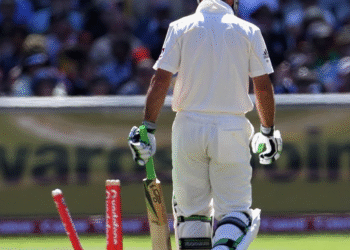The mobile market in 2025 isn’t about the next big phone. It’s about all the phones, tablets, and form factors that no longer need to compromise. And at the heart of it all? The wildly capable Snapdragon 8 Elite chip, quietly turning bold concepts into everyday devices.
From foldables like the razor-thin Motorola Razr 60 Ultra to compact powerhouses like the OnePlus 13s and expansive Android tablets such as the OnePlus Pad 3, the devices themselves couldn’t be more different. But under the hood, it’s the same chip pushing boundaries in performance, design, and connectivity.
Rewriting the Rulebook with the Snapdragon 8 Elite
This isn’t just another yearly bump in speed. Qualcomm’s Snapdragon 8 Elite represents a full rethink.
It starts with a new foundation: the Oryon CPU. A blistering 4.32GHz peak speed with a 30% boost in single-threaded performance sounds like marketing fluff—until you launch three heavyweight apps simultaneously and they load as fast as a blink.
Then comes the Adreno 830 GPU, which ditches the old monolithic design for a “sliced” structure. It’s modular, leaner, and surprisingly cool—literally. That sliced build helps it scale up or down depending on the form factor.
The result? You get smoother ray-traced visuals, up to 25% faster rendering, and desktop-class fidelity—on a device you can toss in your pocket.
And that’s just half of the story.

It Thinks Faster, Too: AI and Cameras Evolve on the Edge
Smartphones aren’t just getting faster—they’re getting smarter, and that’s not a cliché anymore. The 2025 batch of Snapdragon-powered devices are proving it.
The Snapdragon 8 Elite’s NPU (Neural Processing Unit) is now strong enough to run lightweight generative AI models fully on-device. For everyday users, this means:
Summarizing articles without an internet connection
Live-translating calls in real time
AI-generated image editing without lag
At the same time, Qualcomm’s triple 18-bit Spectra Cognitive ISP is doing some sorcery with photos. It breaks down a scene into 12 different layers as you shoot, optimizing faces, sky, foliage, and shadows independently. 8K HDR video capture at 30fps? Already here.
Compact but Ferocious: How OnePlus 13s Balances Fire and Form
Small flagships have always been a challenge. Too hot. Too cramped. Not enough thermal headroom. But the OnePlus 13s is where Snapdragon’s clever engineering meets solid execution.
OnePlus throws a massive 4,400mm² vapor chamber cooling system inside this compact device. That means the Snapdragon 8 Elite can breathe freely—and it shows. Apps launch instantly. Gaming feels locked at 120Hz.
Its 6.32-inch LTPO ProXDR display hits 4,500 nits. Yes, you read that right. And under the hood, you’ve got:
12GB LPDDR5X RAM
UFS 4.0 storage
Sony LYT-700 sensor (50MP main)
The Spectra ISP pairs perfectly with that sensor, letting users capture high-fidelity shots that rival what you’d expect from a full-frame camera in good lighting.
And all of that inside something that slips neatly into your front pocket.
The Other Extreme: Powering the Productivity Giant OnePlus Pad 3
Let’s flip the coin now—what happens when you give Snapdragon 8 Elite room to stretch its legs?
The OnePlus Pad 3 is a productivity-first tablet with a 13.2-inch 3.4K display running at 144Hz. That’s not just about bingeing Netflix. It’s about seamless app switching, buttery animation, and stylus latency that’s almost unnoticeable.
Here’s where the chip gets to show off:
Adreno 830 effortlessly drives multitasking across pro apps
Snapdragon Sound tech brings crystal-clear lossless audio to its 8-speaker array
LPDDR5T RAM (up to 16GB!) powers everything from editing workflows to generative AI workloads
A single sentence: This is the Snapdragon at full throttle.
And somehow, it still runs cool and quiet.
Unified, Yet Unique: One Platform Across Every Screen
The OnePlus tablet and phone talk to each other like twins. Features like App Roaming and cross-device clipboard just work. No spinning circles. No lag.
That’s the real flex of Snapdragon 8 Elite. It’s consistent. You can build a thin flip phone, a gaming slab, or a productivity monster—and everything still feels fast, responsive, and, most of all, connected.
Here’s a quick table comparing the key 8 Elite-powered devices of 2025:
| Device | Display Size | RAM | Camera Sensor | Notable Feature |
|---|---|---|---|---|
| OnePlus 13s | 6.32″ | 12GB LPDDR5X | Sony LYT-700 (50MP) | 4,400mm² Vapor Chamber Cooling |
| OnePlus Pad 3 | 13.2″ | 16GB LPDDR5T | 13MP Rear + 8MP Front | 8-Speaker Snapdragon Sound Array |
| Motorola Razr 60 Ultra | 6.9″ (flip) | 8GB–12GB | 64MP Dual Lens Setup | Ultra-thin Foldable Form |
Each device is dramatically different, yet none of them are compromised.
The Benchmark Everyone Else Is Chasing
Snapdragon’s dominance isn’t just about specs. It’s about enabling form factor freedom without losing performance or consistency. And that’s a benchmark that competitors—MediaTek, Google’s Tensor, Apple’s A-series—are still racing toward.
Sure, raw numbers look good in benchmarks. But what matters is how those numbers translate into the real world. Snapdragon 8 Elite isn’t a product you notice. It’s a platform that quietly makes everything just work.
2025 might be the year of form factor freedom. But really, it’s the year the chip inside made all of it possible.



















